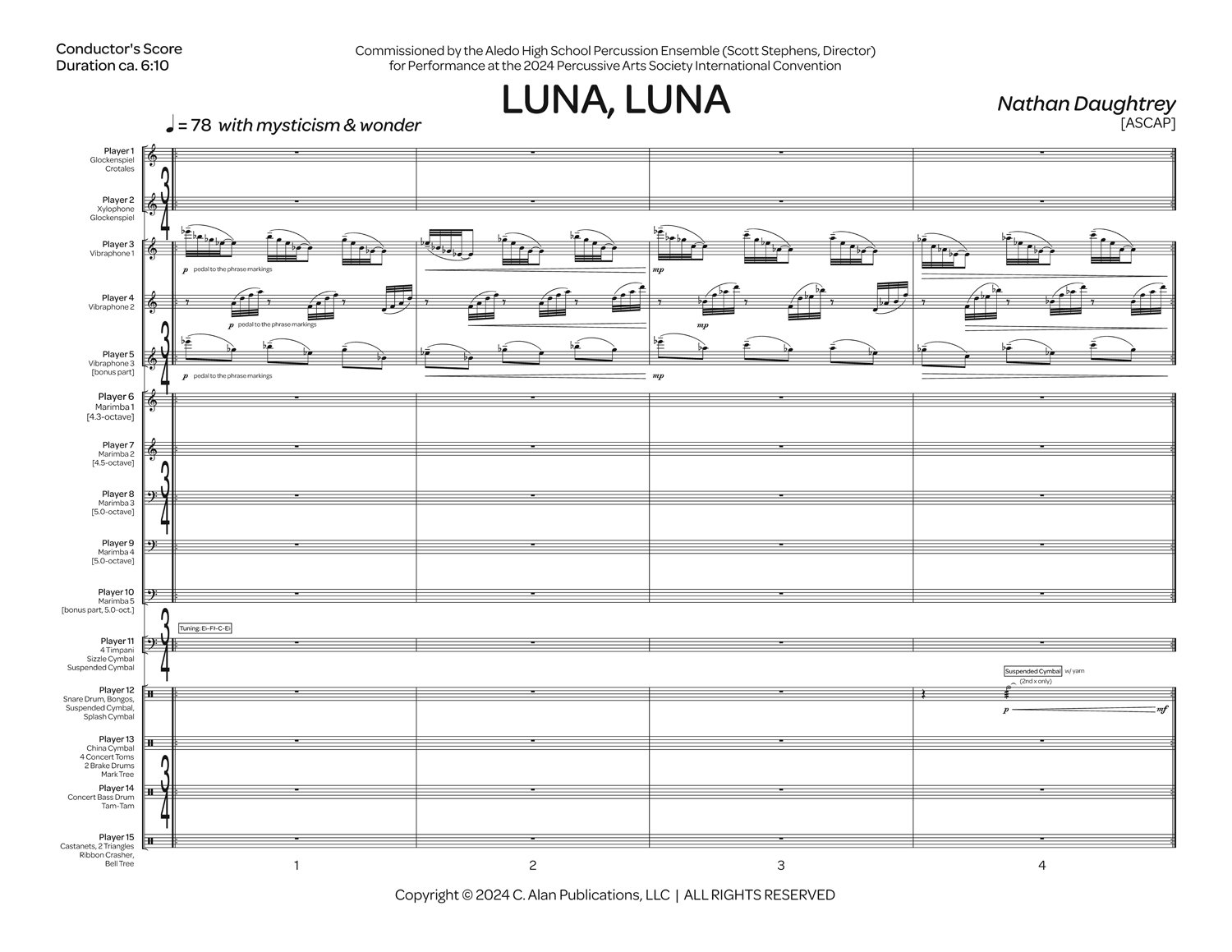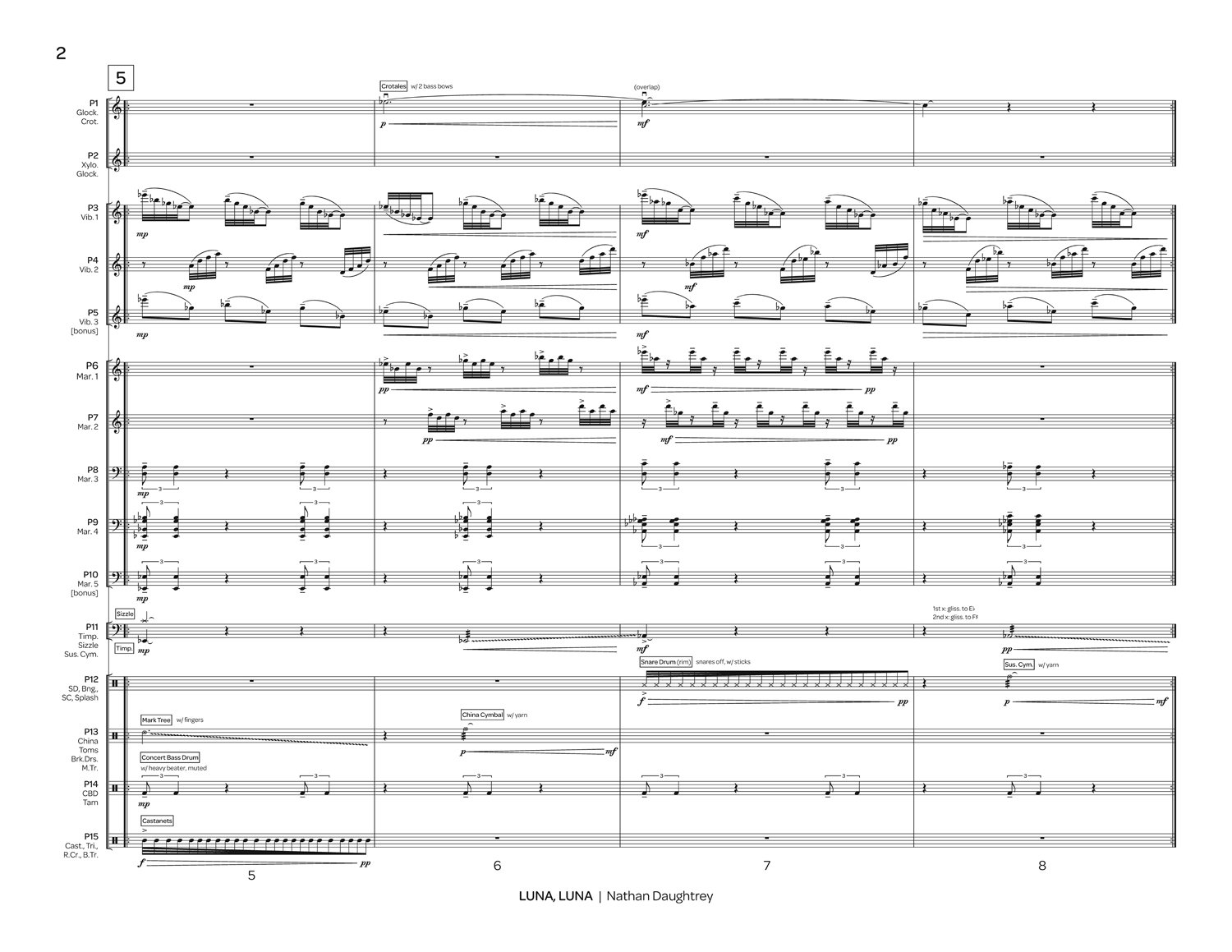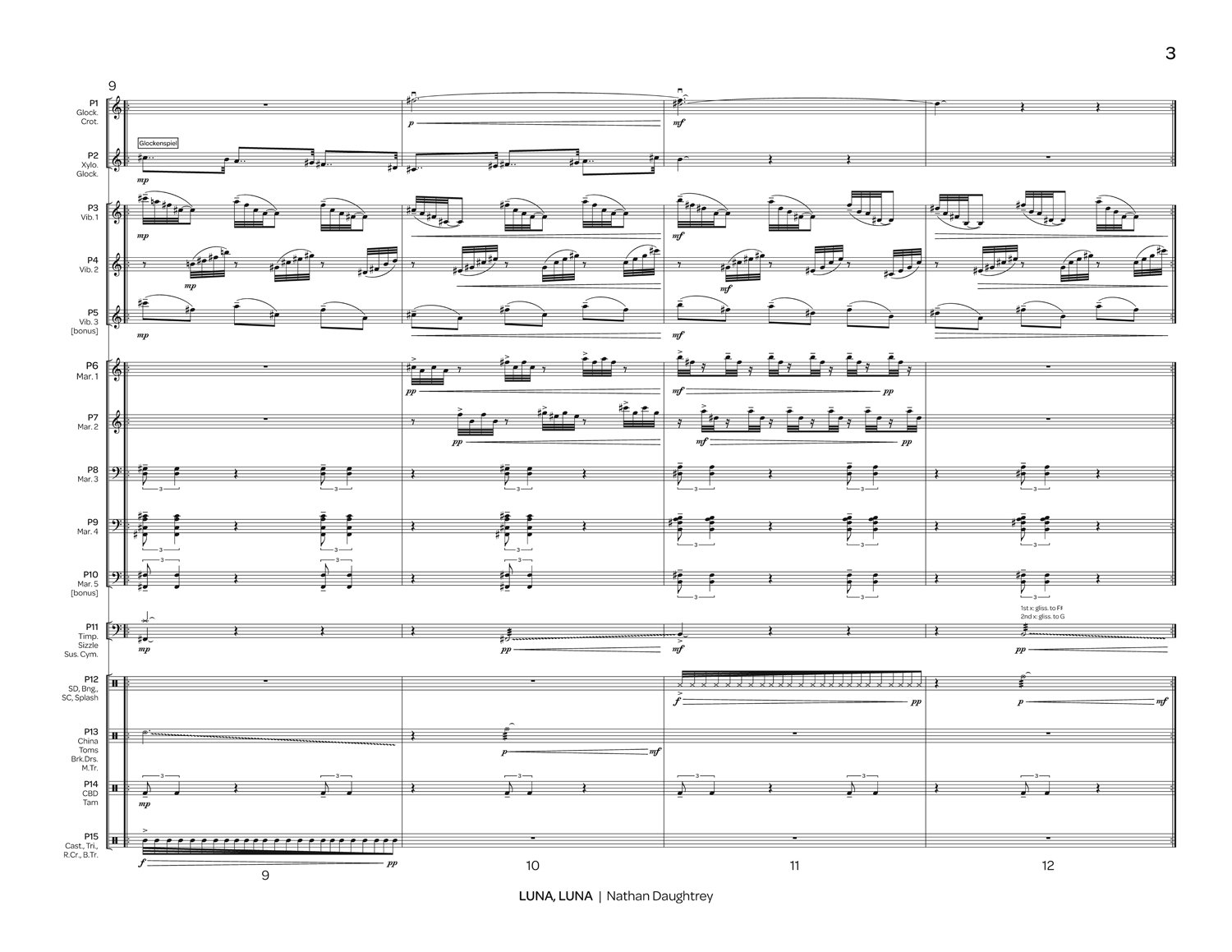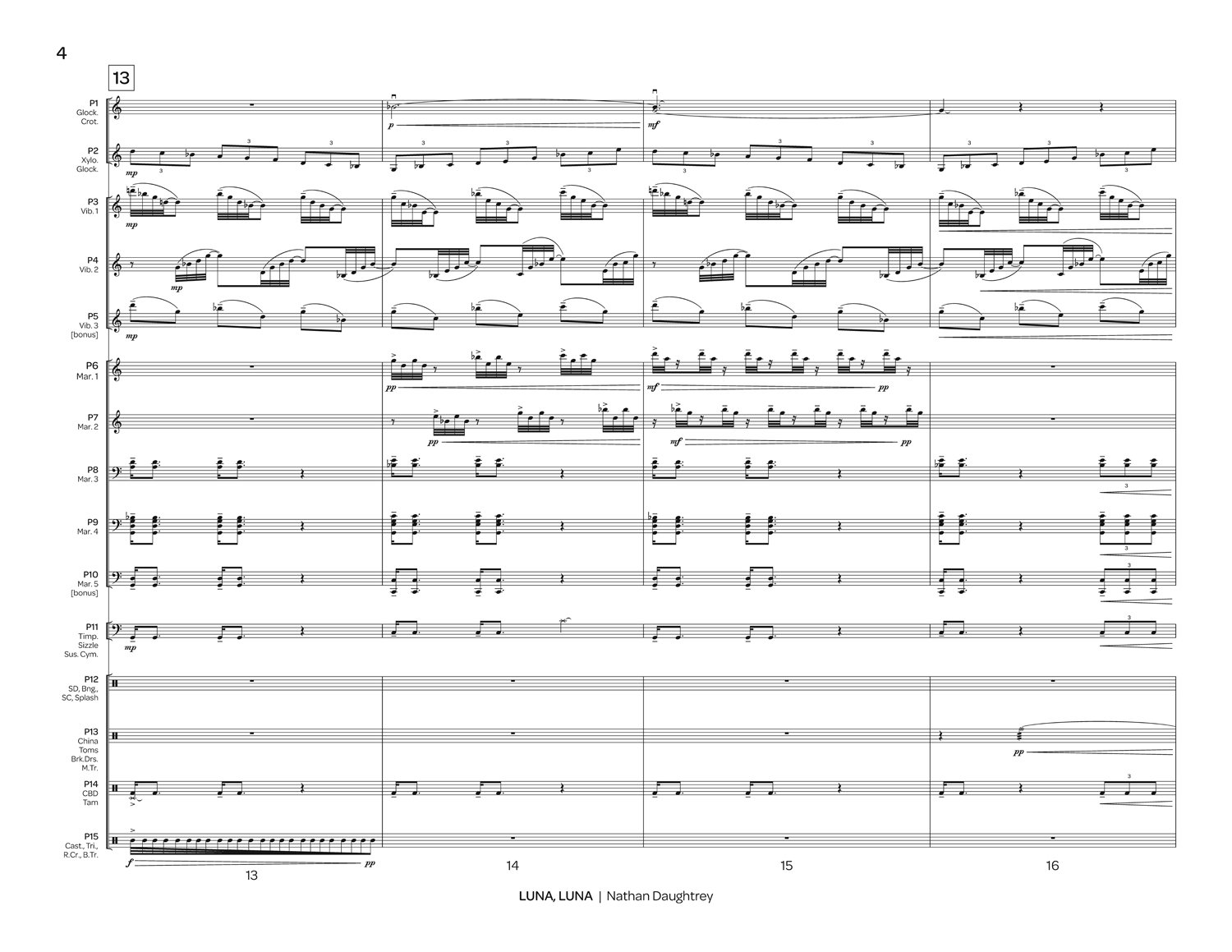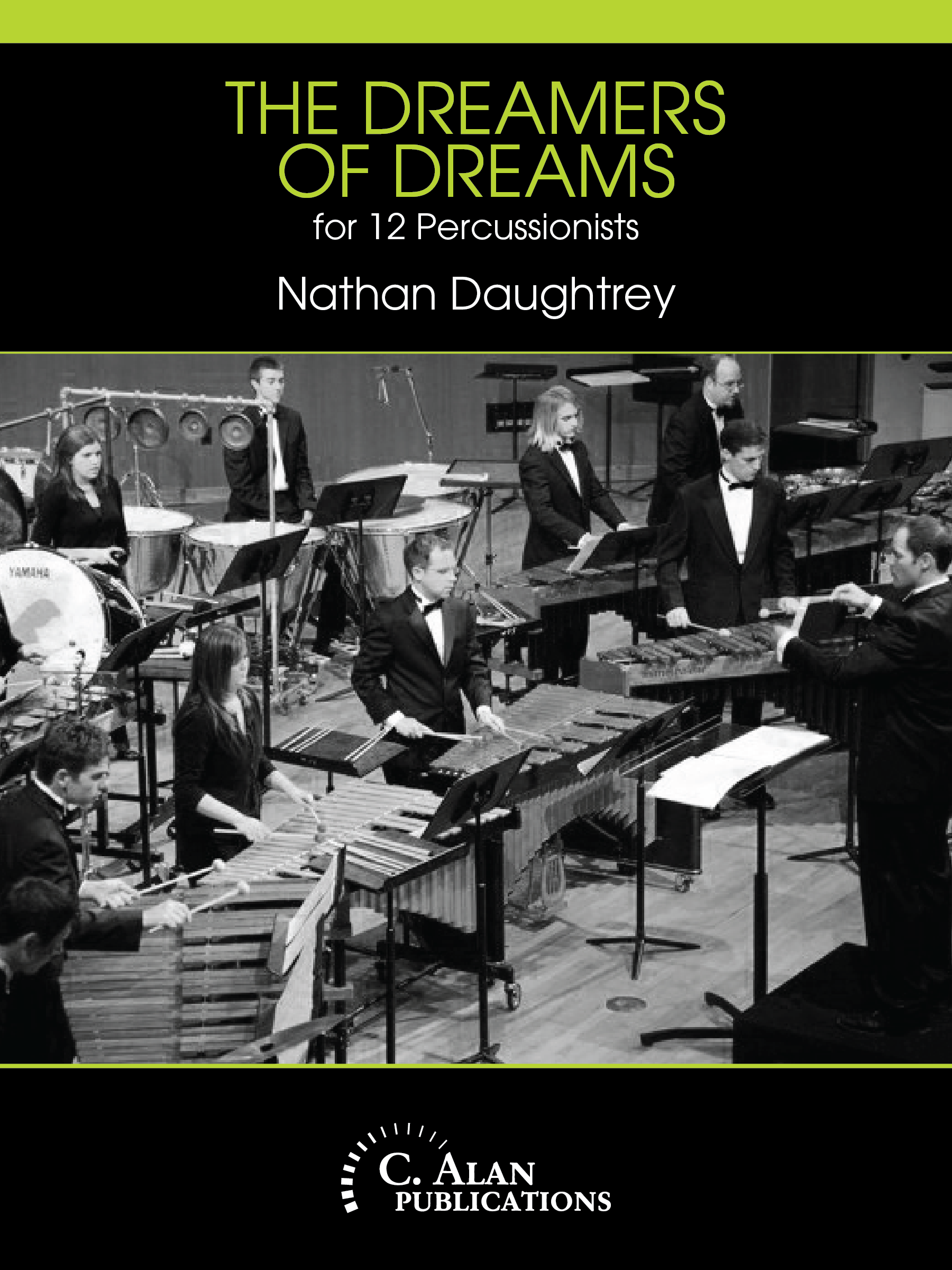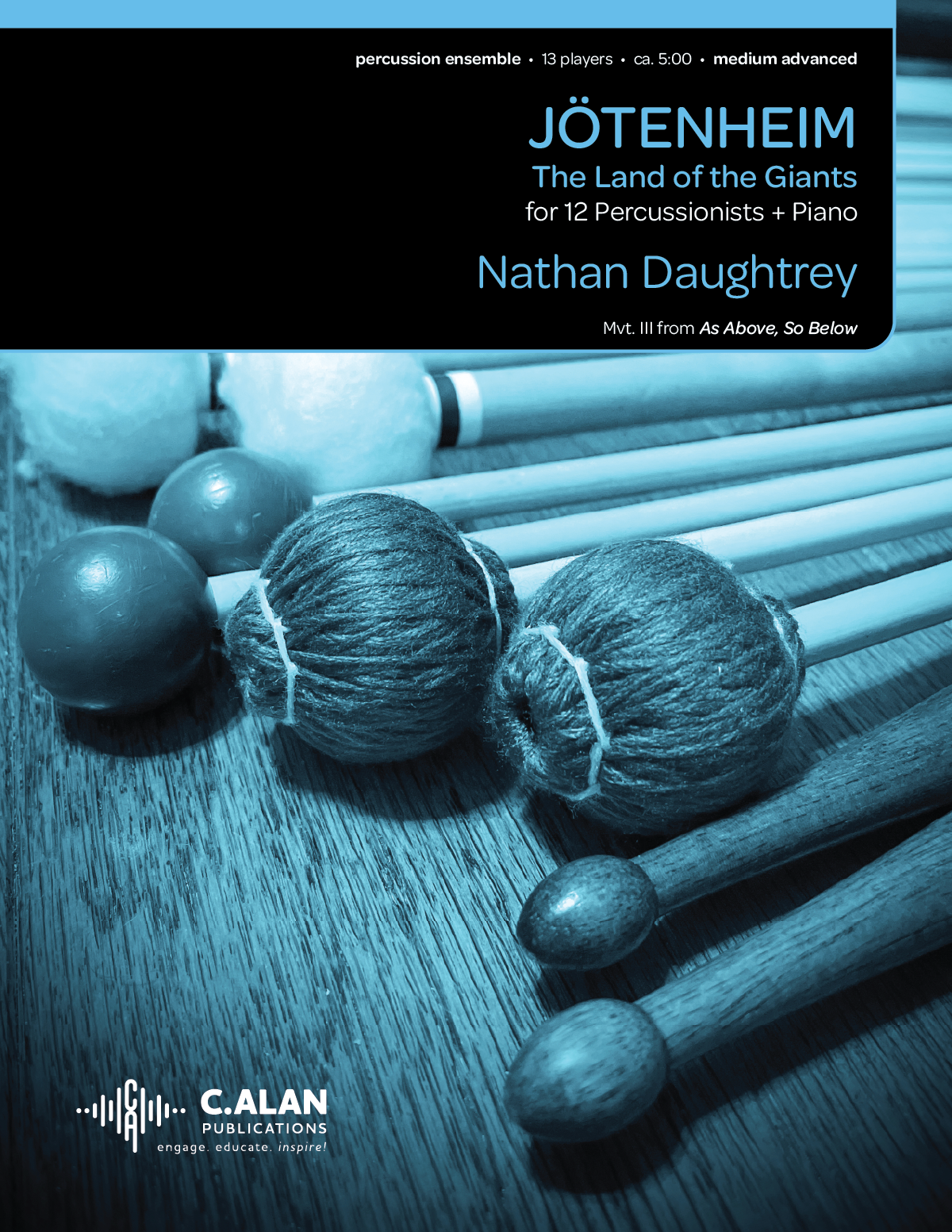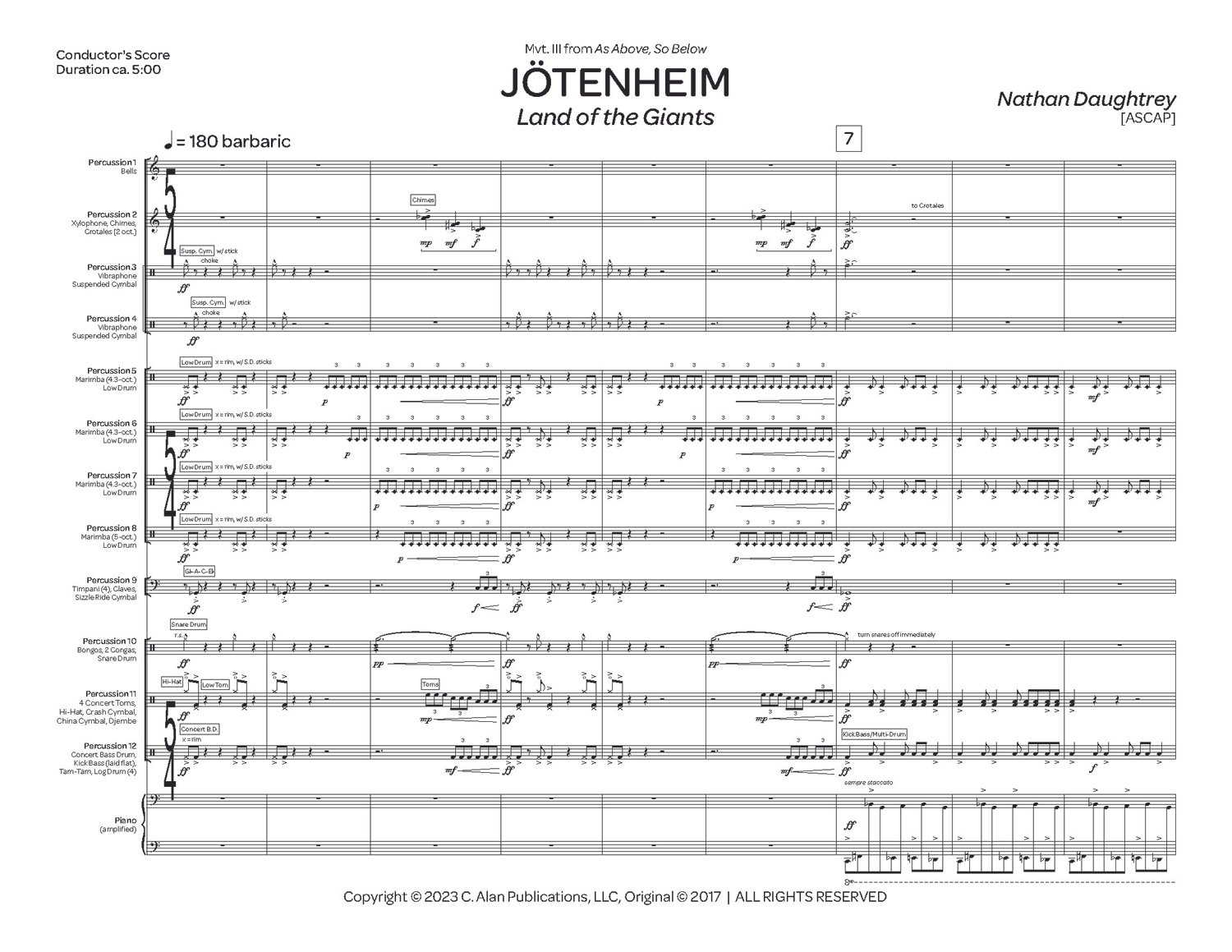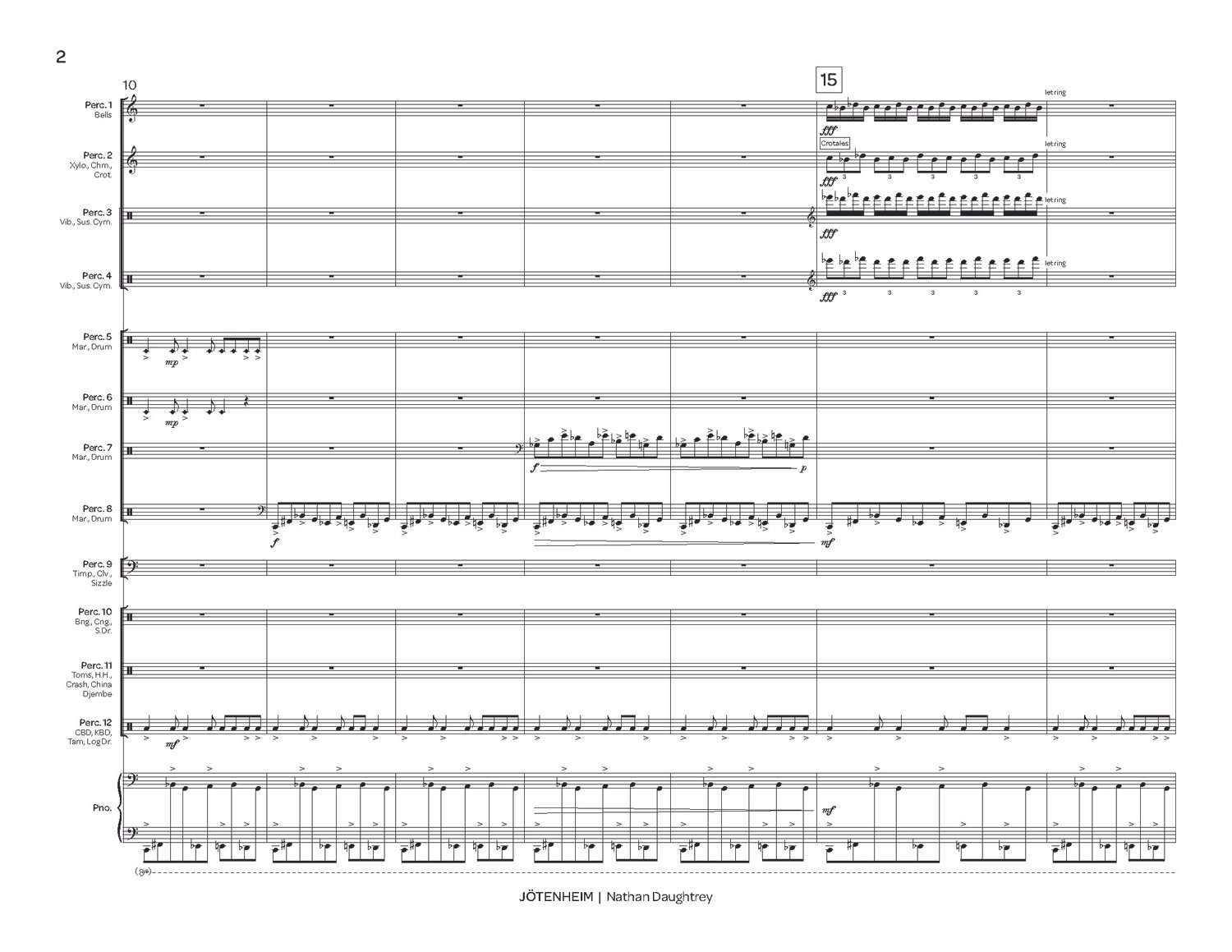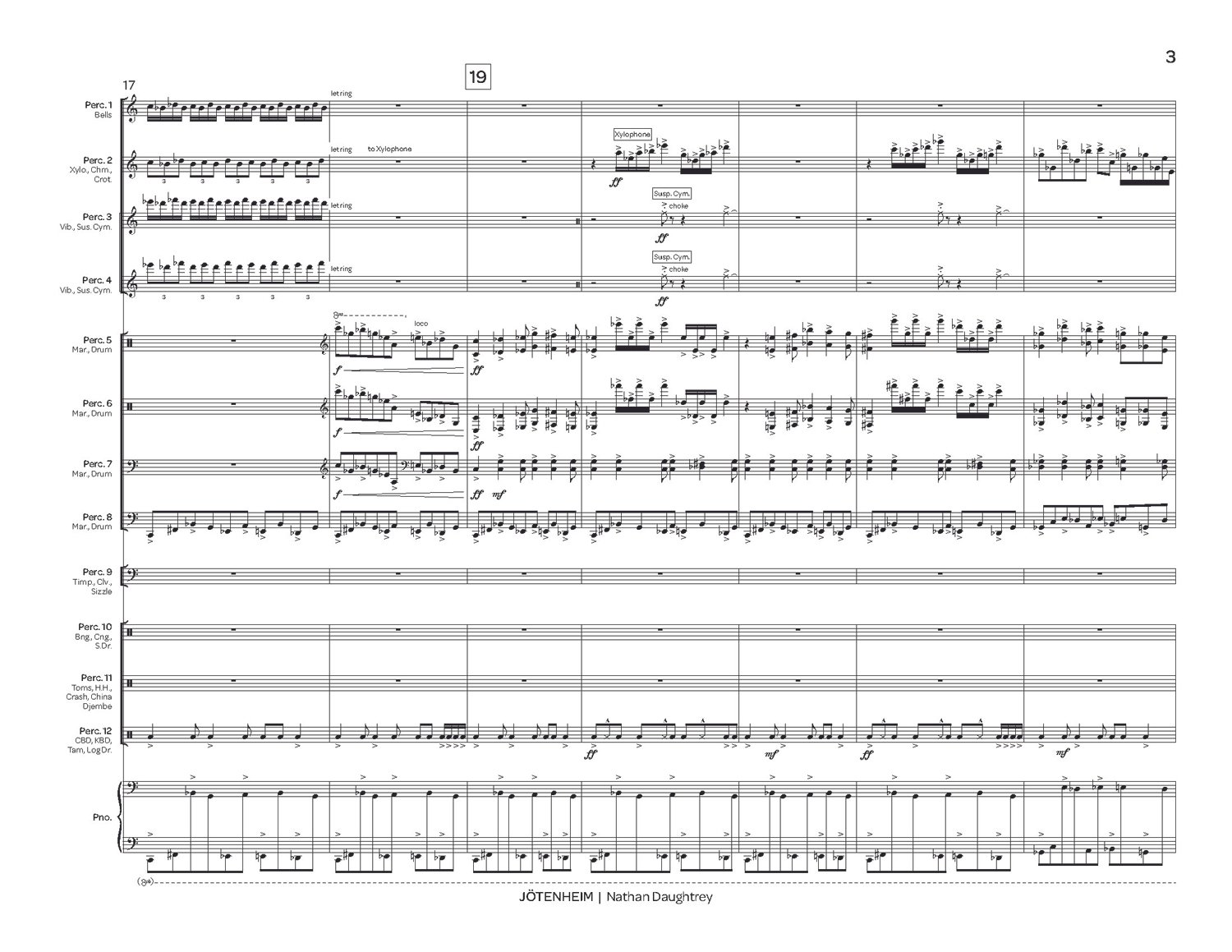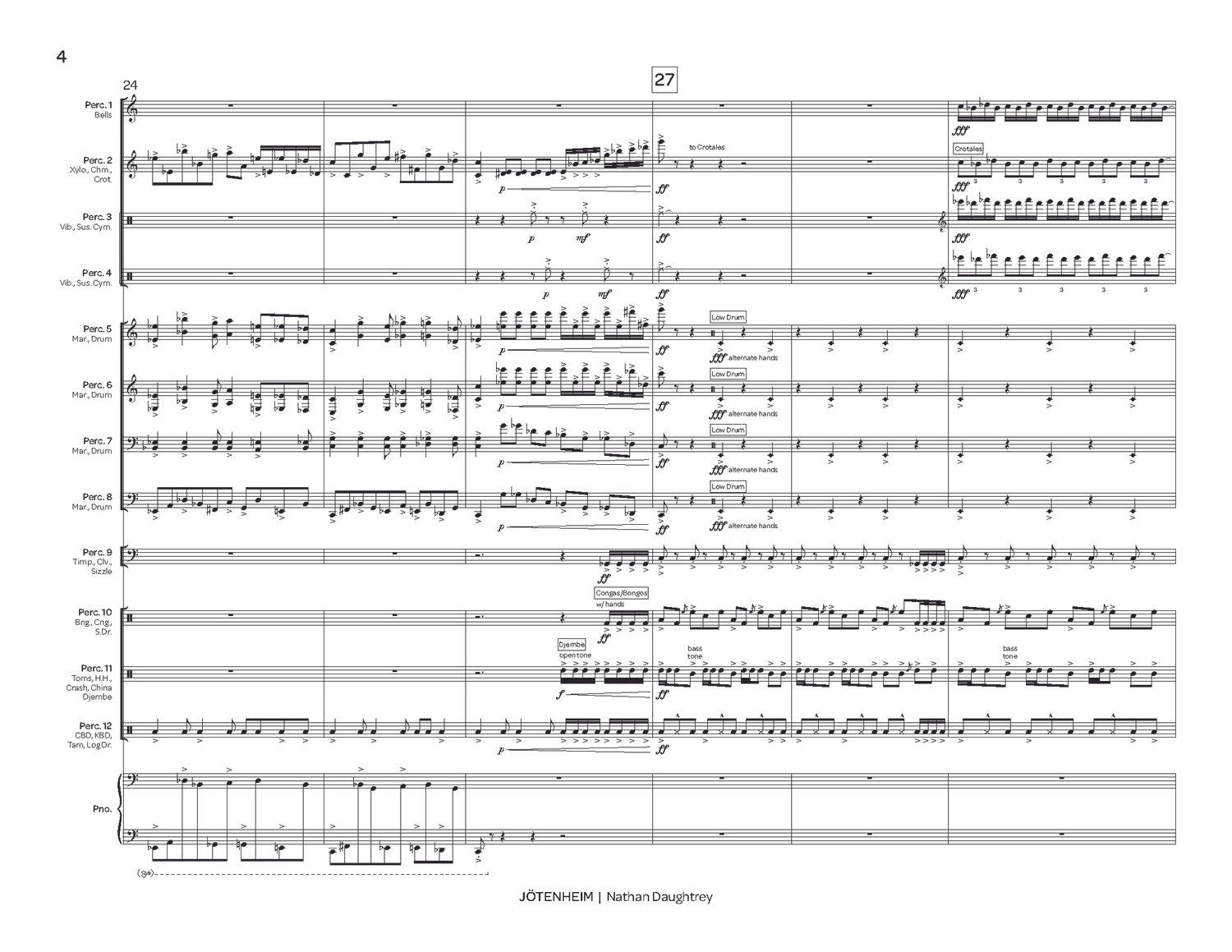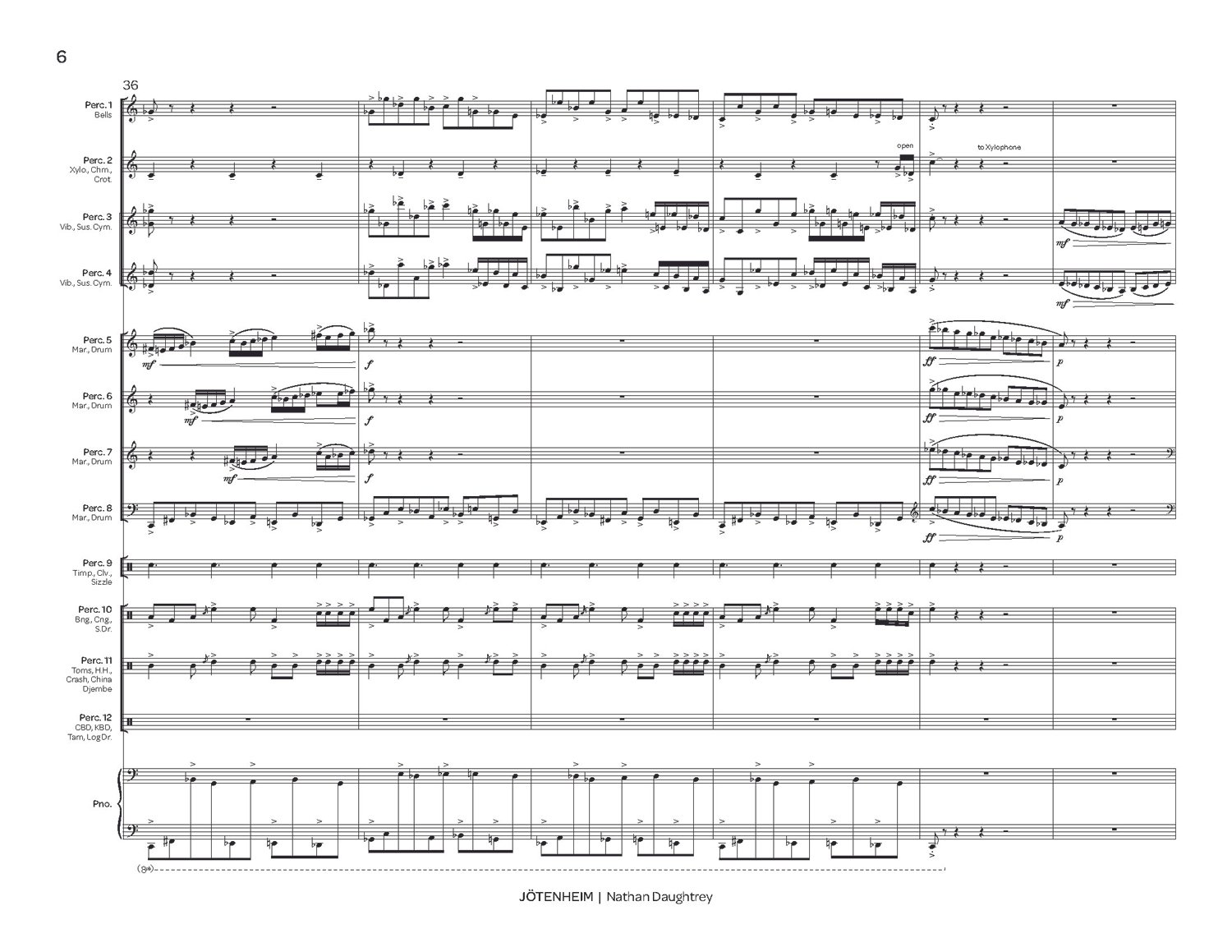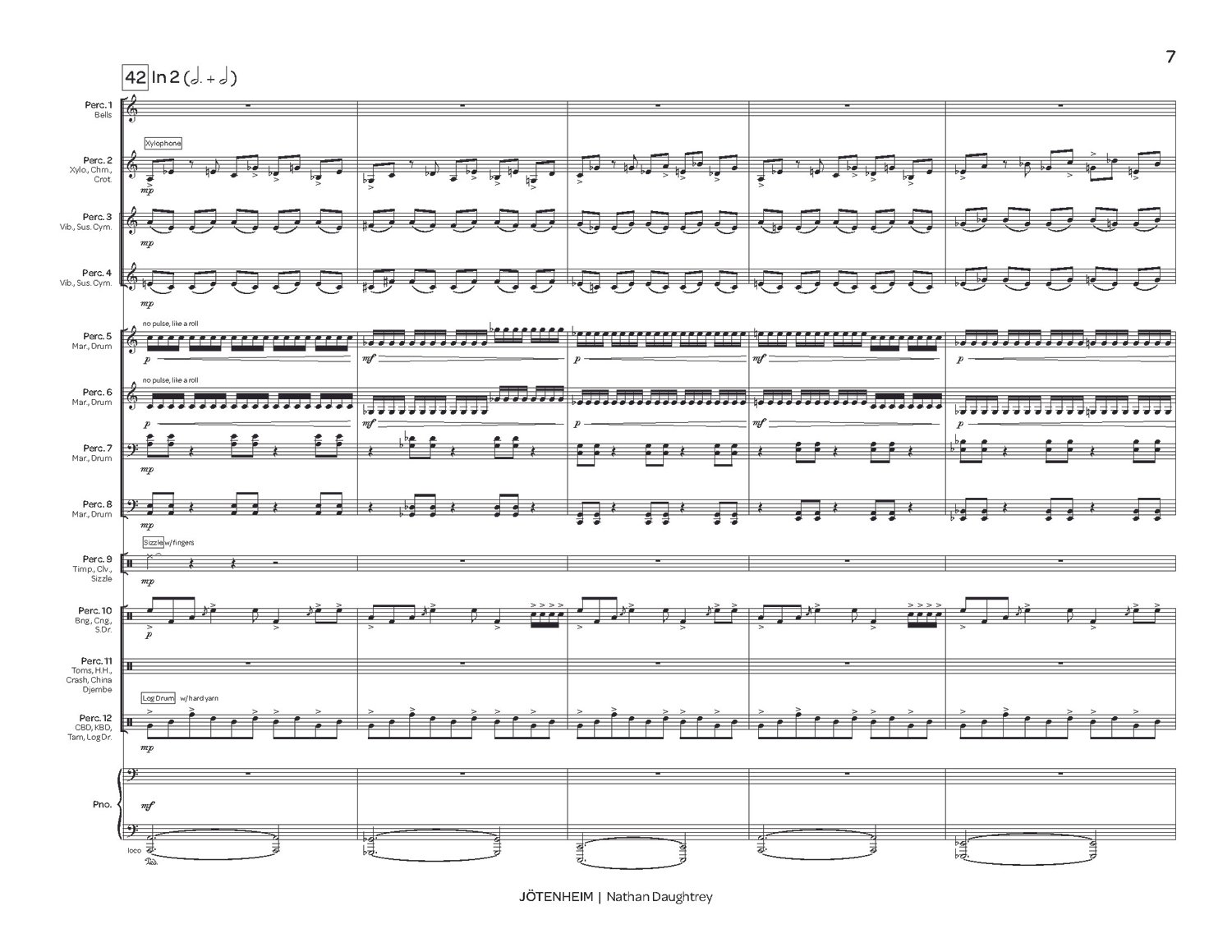 Image 1 of 11
Image 1 of 11

 Image 2 of 11
Image 2 of 11

 Image 3 of 11
Image 3 of 11

 Image 4 of 11
Image 4 of 11

 Image 5 of 11
Image 5 of 11

 Image 6 of 11
Image 6 of 11

 Image 7 of 11
Image 7 of 11

 Image 8 of 11
Image 8 of 11

 Image 9 of 11
Image 9 of 11

 Image 10 of 11
Image 10 of 11

 Image 11 of 11
Image 11 of 11












Firefly
Commissioned by the TCU Percussion Orchestra as the opener for their 2015 PASIC Showcase Concert, Firefly is a dramatic work that centers on the belief that the two species of fireflies in Japan – Genji-hotaru and Heike-hotaru – are the ghosts of fallen warriors from the terrible struggle between two clans in the 12th century.
Medium: Percussion Ensemble (12)
Publisher: C. Alan Publications
Composed: 2015
Duration: 7:40
Difficulty: Grade 5
Commission: Brian A. West & the TCU Percussion Orchestra
Commissioned by the TCU Percussion Orchestra as the opener for their 2015 PASIC Showcase Concert, Firefly is a dramatic work that centers on the belief that the two species of fireflies in Japan – Genji-hotaru and Heike-hotaru – are the ghosts of fallen warriors from the terrible struggle between two clans in the 12th century.
Medium: Percussion Ensemble (12)
Publisher: C. Alan Publications
Composed: 2015
Duration: 7:40
Difficulty: Grade 5
Commission: Brian A. West & the TCU Percussion Orchestra
Commissioned by the TCU Percussion Orchestra as the opener for their 2015 PASIC Showcase Concert, Firefly is a dramatic work that centers on the belief that the two species of fireflies in Japan – Genji-hotaru and Heike-hotaru – are the ghosts of fallen warriors from the terrible struggle between two clans in the 12th century.
Medium: Percussion Ensemble (12)
Publisher: C. Alan Publications
Composed: 2015
Duration: 7:40
Difficulty: Grade 5
Commission: Brian A. West & the TCU Percussion Orchestra
Instrumentation
Percussion 1 (Bells, Crotales, Shekere)
Percussion 2 (Xylophone, Bells)
Percussion 3 (Chimes, Xylophone)
Percussion 4 (Vibraphone, 3 Piccolo Woodblocks)
Percussion 5 (Vibraphone, Temple Blocks)
Percussion 6 (4-octave Marimba, Small Suspended Cymbal)
Percussion 7 (4-octave Marimba, Medium Suspended Cymbal)
Percussion 8 (4.5-octave Marimba, Sizzle Ride Cymbal)
Percussion 9 (5-octave Marimba, Large China Cymbal)
Percussion 10 (4-5 Timpani, Slapstick, Mark Tree, Suspended Cymbal)
Percussion 11 (Bell Tree, Log Drum [4 pitches], 3 Brake Drums, Gliss Gong)
Percussion 12 (Concert Bass Drum, Tam-Tam, Optional Taiko Drum)
Program Notes
Firefly was commissioned by the Texas Christian University Percussion Orchestra, Brian A. West, conductor. The work centers on the belief that the two species of fireflies in Japan – Genji-hotaru and Heike-hotaru – are the ghosts of fallen warriors from the terrible struggle between two clans in the 12th century. Once a year, on the night of the 20th day of the fourth month, the fireflies re-enact the great battle on the Uji River. On that night, all caged fireflies should be set free so they may take part.
The piece follows the arc of the story “Tale of the Heike,” which divides into three large sections, each centering on a different leader and their individual personality traits and leadership prowess. The opening passage from the tale introduces the Buddhist law of impermanence, especially as it relates to good fortune.
INTRODUCTION from “The Tale of the Heike”
The sound of the Gian Shōja bells echoes the impermanence of all things;
the colors of the sāla flowers reveals the truth that the prosperous must decline.
The proud do not endure, they are like a dream on a spring night;
the mighty fall at last, they are as dust before the wind.
The pitch material and thematic ideas for Firefly came from two sources. The first involved transforming the word “Hotaru” (Japanese for “firefly”) into a set of chromatic pitches using a serial alphabet – one that assigns numbers (0 through 11 for each of the 12 chromatic pitches), restarting each time it cycles through the numbers:
H O T A R U becomes 7 2 7 0 5 8 becomes C G C F B-flat D-flat
Serendipitously, this pitch set spells out the Japanese pentatonic Insen scale (C, D-flat, F, G, B-flat). This became the primary pitch material for the entire work, straying here and there to satisfy my own wanderings. The serial firefly can be found throughout all of the keyboard parts in many different forms – from texture to accompaniment to melody and back again.
The primary source for melody came from the traditional Japanese song “Hotaru no Hikari” (or “Glow of the Firefly”). This song is typically sung at graduation-type ceremonies (again emphasizing the idea of impermanence) and uses the tune to “Auld Lang Syne.” At its simplest, the song is based around the major pentatonic scale. To mask the original theme, I instead applied the Insen scale, thus giving it a completely different character. The HOTARU serial collection also helped to organize the meters in the wooden section of the piece at m. 90.
– NHD




